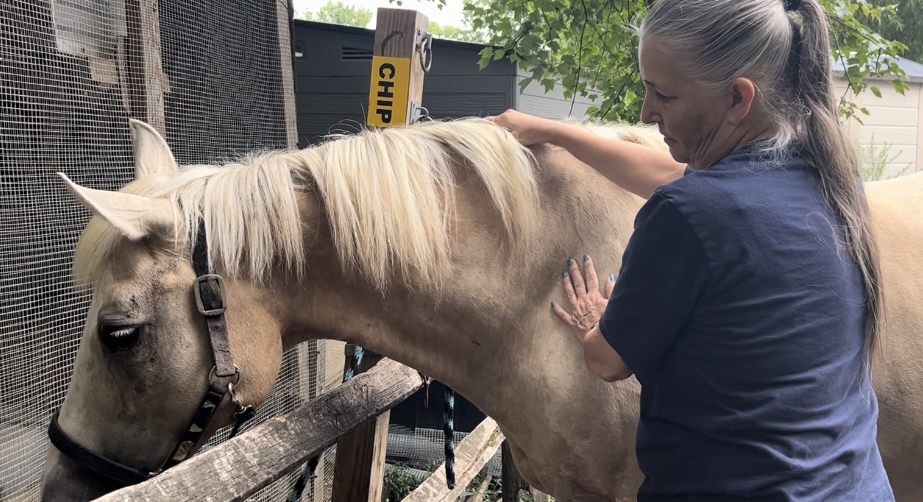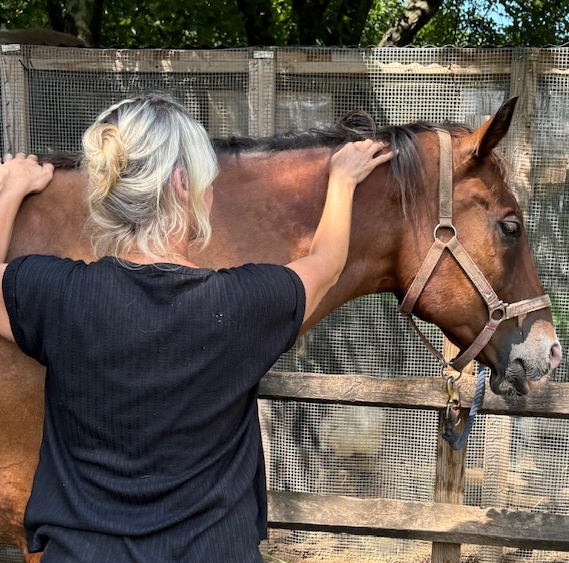An Interview with Kim Fahrion and Paula Carey of Divine Equine Massage
Introduction to the Equine Industry:
Each of us has a unique story about how we fell in love with horses and got our start in the equestrian industry. Kim developed her love for horses while on vacation at a dude ranch, whereas Paula always had a love for horses. While their careers kept them busy, they shared another passion, health and fitness. After becoming great friends at the barn where they boarded their horses, they decided to partner together and pursue equine massage therapy in their retirement.
Divine Equine Massage:
Since completing their certification, Kim and Paula have been working on many horses at their home barn, Legacy Riding Stables in New Jersey. They work on a variety of horses from beginner lesson horses, to trail horses, and those who just need some extra “TLC”. While they hope to expand their clientele to other nearby locations, they are kept fairly busy by routine massages for hard working lesson horses.
Why Massage Therapy?
Whether your horse is a high level performance horse, trail horse, lesson horse, or backyard horse, they can benefit from massage therapy. Horses are athletes and deserve love, care, and comfort to allow their bodies to perform to the best of their ability. Massage therapy serves to soothe sore muscles, reduce inflammation, improve circulation, release endorphins, prevent injury, promote healing, and much more. However, Kim and Paula emphasize that maintenance therapies such as massage should not replace veterinary care.

Importance of Manual Massage:
Kim and Paula find it rewarding to massage each and every horse by hand. While they are open to expanding their knowledge base and use of technological equipment, their experience and education has been entirely hands on. They believe that problems may arise when identifying the source of a horse’s reaction. “When you are working hands on, you are seeing the immediate reaction to something.” By manually suppling and softening muscles, they can feel the progression of that muscle over time. Whereas with technology, they are not always able to identify the source of the horse’s reaction (ie. sound, vibration, etc.).
Awareness and Attention to Detail:
You are your horses’ biggest advocate. They depend on you to listen. Too often, riders ignore behaviors that scream discomfort. While many problems come to light undersaddle, you can pick up on behaviors and mobility restrictions on the ground. Kim and Paula encourage riders to be intentional about stretching their horses on the ground and warming up their horses properly before work. For example, by performing carrot stretches on the ground before your ride, you can take note of your horse’s flexibility and symmetry from side to side.
While there are many possible causes of tightness in your horse’s body, it is important to know that one of them could be you. Your balance and suppleness has more of an impact on your horse than you think. Is your left hip flexor tight? Does it block your range of motion and relaxation in the saddle? Chances are your horse is tight in its left hip flexor too! Your horse’s body will surely thank you when you are stable and balanced.
Worth Their Weight in Gold:
Lesson horses deserve the same maintenance as high level performance horses. While they may not perform skills to the same intensity as a high level horse, their bodies are taxed in different ways. As Kim and Paula mentioned, the balance of the rider’s seat greatly impacts the horse’s back and body as a whole. Every beginner rider struggles with balance and their seat, therefore making the horse’s job even more difficult and taxing. In the same way that show horses require routine maintenance, so do lesson horses. A large part of Kim and Paula’s routine massage clients consist of heavily taxed lesson horses.

Tips to Keep in Mind:
- Massage should not be done before you ride. Massage should be done at the end of the horse’s work day as they need time to recover and continue to release endorphins.
- Just like people, horses need to stretch and warm up properly. Examples of stretches may include, neck stretches to the hip, foreleg stretches, circles with hind legs, swaying of the rump and withers (side to side), etc.
- Never underestimate the time necessary for both warming up for and recovering from intense work.
- Be aware of how your horse compensates, and understand that soreness isn’t always going to be where you first see or notice it.




